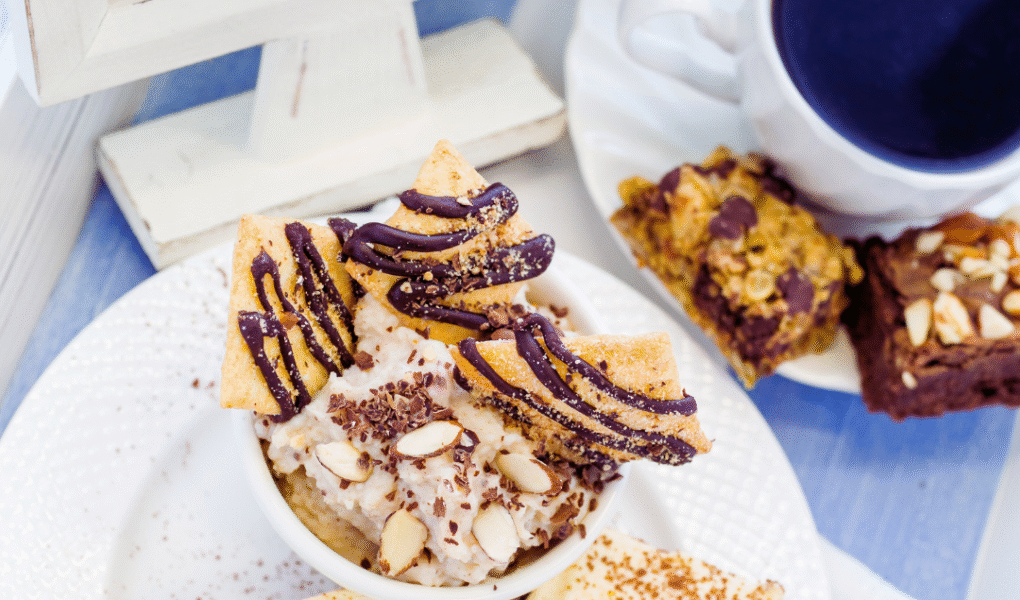Many people love classic desserts, but those with gluten intolerance often miss out on these sweet treats. Transforming traditional recipes into gluten-free versions is not only possible, but it can also bring rich flavors and textures to the table. By substituting wheat flour with gluten-free alternatives like almond flour, coconut flour, or rice flour, anyone can enjoy their favorite desserts without sacrificing taste.
Creativity plays a key role in this transformation. Baking is a science, and understanding how different ingredients interact allows for delicious results. Shedding wheat does not mean compromising quality; it means exploring a variety of textures and ingredients to create satisfying gluten-free confections.
Exploring gluten-free dessert options opens up a world of culinary possibilities. From cakes to cookies, the right substitutions can recreate beloved classics and even inspire new favorites. With the right guidance, anyone can successfully adapt and enjoy desserts that cater to their dietary needs.
Key Tips for Turning Classic Desserts Into Gluten-Free Versions
When adapting classic desserts to gluten-free recipes, understanding the right flours and essential substitutions is crucial. It’s also important to prevent cross-contamination while preserving the desirable texture and flavor of the original treats. The following tips provide clear guidance on achieving successful gluten-free desserts.
Understanding Gluten-Free Flours
Gluten-free flours vary in texture and flavor, so selecting the right combination is vital. Common choices include:
- Almond Flour: Adds moisture and richness, ideal for dense cakes.
- Coconut Flour: Absorbs liquid and requires adjustments in recipes.
- Rice Flour: Provides a light texture, often used in blends.
- Cassava Flour: Mimics wheat flour closely, making it versatile.
- Potato Flour: Helps create a moist end product.
For optimal results, a gluten-free flour blend that combines several of these flours often works best. Individuals should also consider xanthan gum or psyllium husk to improve structure and mimic gluten’s elasticity.
Essential Ingredients and Substitutions
Ingredient substitutions are essential for gluten-free baking. Here are some key considerations:
- Sugar: Regular granulated sugar works well. Brown sugar adds moisture and depth.
- Maple Syrup: For a natural sweetener, maple syrup can replace sugar, but may alter the liquid balance.
- Eggs: Vital for binding; use an egg substitute (like flaxseed meal) for vegan recipes.
- Coconut Oil: Acts as a fat source comparable to butter, adding flavor.
- Vanilla Extract: Enhances overall flavor in baked goods.
These substitutions will help maintain flavor and ensure that the dessert is both enjoyable and gluten-free.
Preventing Cross-Contamination in Baking
Cross-contamination can undermine gluten-free efforts. To safeguard against it, follow these steps:
- Use dedicated gluten-free utensils, mixing bowls, and baking pans.
- Clean all surfaces thoroughly before preparing gluten-free items.
- Store gluten-free ingredients separately from those containing gluten.
- Check labels carefully, especially for packaged ingredients. Some may share production facilities.
Awareness of these practices ensures that gluten-sensitive individuals can safely enjoy desserts.
Balancing Texture and Flavor in Gluten-Free Baking
Achieving the right texture in gluten-free desserts involves experimentation with flour types and additives. Consider the following:
- Baking Soda: A leavening agent, crucial for lift.
- Xanthan Gum: Improves elasticity and helps prevent crumbliness.
- Substituting Liquids: Gluten-free flours often require more moisture. Adjust the liquid content accordingly.
Flavor can be enhanced by adding vanilla extract or spices. Each gluten-free dessert may require unique adjustments to create a final product that rivals the original in texture and taste.
Adapting Popular Classic Desserts to Gluten-Free Recipes
Transforming classic desserts into gluten-free versions requires thoughtful ingredient substitutions and adaptations. Many traditional recipes can be modified without sacrificing flavor or texture. Below are specific approaches to make popular desserts gluten-free.
Gluten-Free Cakes and Cupcakes
For gluten-free cakes, using a blend of gluten-free flours such as almond, coconut, or rice flour enhances the texture. A gluten-free cake recipe often benefits from the addition of xanthan gum to improve consistency.
Popular choices include gluten-free chocolate cake and carrot cake. When making a chocolate birthday cake, incorporating cocoa powder alongside gluten-free flour delivers a rich flavor. For cupcakes, ensure the baking powder is also gluten-free.
Important tips:
- Choose blends: Look for all-purpose gluten-free flour blends that already contain stabilizers.
- Moisture balance: Add ingredients like applesauce or yogurt for moisture in denser cakes.
Reinventing Cookies and Bars without Gluten
Cookies and bars can easily become gluten-free by substituting traditional flour. For sugar cookies, almond flour provides a delicate texture and slight nutty flavor.
In recipes for chocolate chip cookies, using a mixture of gluten-free flour and fine oats can create the right consistency. When baking bars, ensure any binding agents, like eggs, are present in sufficient quantity for structure.
Consider these points:
- Texture adjustments: Mixing different gluten-free flours can yield a better cookie texture.
- Chilling dough: Allow cookie dough to chill for at least 30 minutes to improve shape during baking.
Tarts, Pies, and Cheesecakes Made Gluten-Free
For tarts and pies, gluten-free crusts can be made using almond or oat flour, combined with butter or coconut oil for richness. The crust should be pre-baked to ensure it holds up well during baking with fillings.
Cheesecakes can also be adapted by making crusts with crushed gluten-free graham crackers or similar alternatives. Cream cheese frosting works well atop gluten-free cakes and cupcakes, ensuring no loss in flavor.
Key suggestions:
- Enhanced flavor: Experiment with spices or zest in gluten-free crusts for added dimension.
- Quality brands: Choose trusted brands for gluten-free baking products to avoid cross-contamination.
Navigating Dietary Restrictions and Allergen-Free Baking
Successfully baking desserts that accommodate dietary restrictions requires careful selection of ingredients and an understanding of various allergies. This section will address gluten-free, dairy-free, and nut-free options while also focusing on the needs of individuals with celiac disease and those who are gluten intolerant.
Gluten-Free, Dairy-Free, and Nut-Free Dessert Options
Many classic desserts can be transformed into gluten-free, dairy-free, and nut-free versions. Some excellent substitutes include:
- Flours: Use almond flour, coconut flour, or gluten-free all-purpose flour blends to replace wheat flour.
- Dairy Alternatives: Substitute cow’s milk with almond milk, coconut milk, or oat milk. For butter, try using coconut oil or vegan butter.
- Sweeteners: Maple syrup or agave nectar can replace refined sugar while adding unique flavors.
These alternatives help create desserts that cater to multiple dietary needs without sacrificing taste or texture.
Accommodating Celiac Disease and Gluten Intolerance
Celiac disease and gluten intolerance require strict adherence to a gluten-free diet. For those affected, cross-contamination is a significant concern. When baking:
- Separate Utensils: Use dedicated measuring cups, mixing bowls, and baking pans to avoid gluten exposure.
- Certified Gluten-Free Ingredients: Always read labels and choose products certified as gluten-free to ensure safety.
- Avoiding Hidden Gluten: Ingredients such as soy sauce, malt, and some processed foods may contain gluten. Checking labels is essential.
Making these adjustments can help ensure that baked goods are safe for individuals with celiac disease.
Choosing Safe Ingredients for a Gluten-Free Diet
Selecting appropriate ingredients is crucial in creating gluten-free desserts. Focus on:
- Whole Foods: Fresh fruits, vegetables, and unprocessed foods are naturally gluten-free.
- Trustworthy Brands: Research brands known for gluten-free products. This can reduce the risk of unintentional gluten exposure.
- Read Labels: Ingredients like oats must be labeled gluten-free, as cross-contact with gluten-containing grains can occur.
By prioritizing safe ingredients, bakers can create delicious desserts that meet the needs of all guests, regardless of their dietary restrictions.




